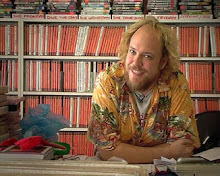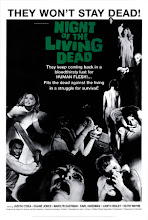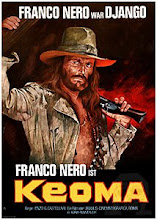 Curse Of The Vampires
Curse Of The VampiresPhilippines
aka Ibulong Mo Sa Hangin, Creatures Of Evil
Director Gerardo de Leon Writers Ben Feleo, Pierre L. Salas Producer Amalia “Muhlach”/Fuentes Music Tito Arevalo
Cast Eddie Garcia (Eduardo Escodero), Amalia Fuentes (Leonore Escodero), Romeo Vasquez (Daniel Castillo), Mary Walter (Doña Consuelo Escodero de Victoria)
First tonight is a minor classic of Philippines horror cinema, the 1966 Curse Of The Vampires, a direct follow-up to the late director Gerardo de Leon’s equally compelling 1964 The Blood Drinkers. Dubbed into English and released by Hemisphere Pictures in 1971 as the bottom of a double bill with his frequent collaborator Eddie Romero’s Beast Of Blood, it looked to the world like any other low budget drive-in nonsense. But de Leon, along with Romero (the Blood Island trilogy, The Walls Of Hell), was a classically trained filmmaker and is enshrined as a Philippines National Artist, and thus everything he does is with purpose, from the masterful framing, composition, lighting… As a result, Curse Of The Vampires is not just a throwaway B-programmer with bloodsuckers but a serious horror film with deep cultural resonances.
A further link to The Blood Drinkers is Amalia Fuentes, who also produced Curse… under her real name Amalia Muhlach for her own production company. Amalia was one of the most famous Philippine actresses of the Sixties, a mixed Spanish or “mestizo” beauty who plays the heroine Leonore, a tragic figure at the centre of the doomed Escudero family riddled with vampirism and more. As a Spanish colony until the late 1800s, the country’s Hispanic legacy is still strong, leaving behind a feudal nobility who owed its alliegances more to
The film opens with Leonore in the arms of Daniel (Romeo Vasquez), a pure-hearted local lad who promises her to love her even from beyond the grave. Her father Don Enrique Escudero (Johnny Monteiro) denies permission for them to marry due to the family curse - vampirism, like madness, is borne by blood, and he has unwittingly kept the curse alive by keeping his vampire wife Dona (Mary Walter) locked in the basement. Every night she wakes up in her coffin, her now-animalistic screams pleading for blood. Don Enrique is forced to whip her into submission but can’t let go – the family has become insular to the point of incestuous. The mother finally escapes from the basement, captured in a beautifully executed shot of the former matriarch, now a savage beast, tinted red in the foreground while her stern-looking portrait looms in the background. Eduardo willingly allows himself to be turned into a vampire by his mother’s loving embrace, and when his father dies in tragic circumstances, he assumes the paternal role of feudal lord. His veins now coursing with evil, he covets both his sister and Daniel’s sister Christina (Rosario del Pilar), to whom he becomes an aristocratic predator, demanding total servitude from his new vampiric bride (“You are my lord, I am your slave,” Christina says most tellingly on her short-lived honeymoon).
Leonore accepts her fate to follow the family curse, yet Daniel won’t allow her and reiterates his oath to protect her, in this life and the life after. The entire film is tinged with sadness and loss, and ends with not just a mob of angry villagers, but an entire Catholic parade, all brandishing torches while praying to gaudy statues of Mama Mary. Filipino gothic was a relatively small and short-lived genre, but de Leon certainly made it his own.
Its predecessor The Blood Drinkers was filmed with very little money in mostly black and white with tinted scenes for dramatic effect. Curse… is filmed in colour and loses some of The Blood Drinkers’ aesthetic charms. De
Director Eddie Nicart Executive Producer Peter M. Caballes Story/Screenplay Cora Ridon Caballes Cinematography Bhal Dauz Music Pablo Vergara Editor Edgardo Boy Vinarao
Cast Weng Weng (Mr Weng), Yehlen Catral (Elsa), Nina Sara (Clara), Max Alvarado (Lupo the mute), Max Laurel (Gordon), Romy Diaz (Sebastian), Ernie Ortega (Ku Manchu)
One of Weng Weng’s first cameos saw him playing deputy to Dolphy, the king of Filipino comedy himself, in Da Best In Da West (1981), a film which employs the outrageous conceit of having its cast, itself a throwback to the glory days of the Pinoy western, run around in cowboy hats and ponchos, whilst clearly remaining rooted in the modern-day Filipino countryside. D’Wild Wild Weng (1982), made barely 12 months later between the Agent 00 films, is a shameless plundering of d’King’s RVQ production courtesy of Peter and Cora Caballes’ rival Liliw Films International, and shares (exploits?) much of the cast from Weng Weng’s other movies.
D’Wild Wild Weng is not strictly speaking an Agent 00 film, as Weng Weng trades in his characteristic white suit for a tiny waist coat and ruffled shirt (incognito, you understand). He is only ever referred to as “Mister Weng” or “Mr Wang”, depending on how hungover the guy in the dubbing booth was. He does, however, strip down to karate pants to do some suave martial art moves and, once the sight of Weng without a shirt becomes too much, dons the familiar white attire AND blue paratrooper duds for target practice, just in case you’ve forgotten what he’s capable of.
Silhouetted against the opening Spaghetti Western credits and Pablo Vergara’s jaunty mariachi score, government agents “Mr Weng” and his mountainous sidekick Gordon - who, played by future Zuma star Max Laurel, is more than twice the size of Weng - head to
Weng and Gordon rescue kindly villagers Mr Dencio and his daughter Clara, who warn them of Sebastian’s terrible ways. Later, sensing an opening, Weng tunelessly serenades Clara outside her window with Gordon on guitar and Lupo squealing harmonies; it’s a direct steal from Dolphy’s hopeless attempt at seduction in Da Best In Da West, in which Weng strums a guitar as big as he is. Less than a minute later they discover the family has been kidnapped - by ninjas, no less! - and are tied to X-shaped crosses by Sebastian’s sidekick Ku Manchu (Ernie Ortega). Weng helps them escape, but is later captured himself, spread-eagled between four posts with his shirt more than a little ruffled.
As always, Weng’s stature is the main source of amusement - from being carried around in a sack on Gordon’s back, to stealing bananas from under a table, to Gordon launching him like a coconut at Sebastian’s balcony. It’s as if a performing monkey had its cigar taken away and was cross-bred with
Of course, there are very few gadgets in the Wild West other than a Gatling Gun, even bigger than Weng Weng, mounted on the back of a jeep for the big finale. And what an ending: Weng, Gordon and Lupo face-off against a veritable army of Goons. On the signal, Weng cranks the rattling Gatling’s handle as fast as his little arm can, mowing down wave after wave of “Mexicans” in slow motion (recalling the best moments of D’Wild Bunch). Stage left, a tribe of pygmy Indians - you ready correctly, DWARVES in redface and warpaint - launch a counter-attack with bows and arrows amidst a sea of explosions. Oh, and let’s not forget the ninjas. It’s one of the most insane Filipino B-endings, a micro-Apocalypse Now and a dadaist triumph for Nicart’s merry band of pranksters.
The Agent 00 films were sold all over the world, but I don’t recall an English-dubbed midget western ever making it past Manila Customs. As with its follow-up The Impossible Kid, Weng Weng has the same literal, uninspired and relatively humourless dialogue delivered in a breathy baritone at complete odds with his real helium-huffing voice, which makes you yearn for the For Y’ur Height Only crew to hijack the dubbing studio. And, like The Impossible Kid, it’s technically rough in places, and ultimately isn’t a patch on the original Agent 00 adventure. Nevertheless, D’Wild Wild Weng does have its share of glorious Weng Weng moments, and the fiesta music (with just a hint of the theme from The Good The Bad And The Ugly) keeps things, like Max Laurel’s third leg, swinging away nicely.






















































































No comments:
Post a Comment